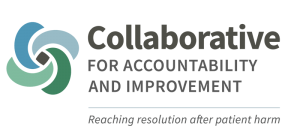Communication-and-resolution programs (CRPs) are used by healthcare providers, administrators, and insurers to effectively communicate with and apologize to patients in the wake of adverse incidents; to investigate the occurrence; and offer compensation if appropriate. Researchers examined the effects of CRPs in two community hospitals and two academic medical centers in Massachusetts. They analyzed surveys and recorded data gathered by program members and clinicians at the hospitals. Researchers concluded, that CRPs are effective in increasing patient safety, but there were some barriers in implementing these programs. Barriers included lack of patient participation in disclosing data, as well as some compensation needs not being fulfilled.
Tools and Resources[ Show all or clear results ]
Case Study
Journal Article
Published articles related to CRPCommunicating with patients about diagnostic errors in breast cancer care: Providers’ attitudes, experiences, and advice
Published articles related to CRP
The study was conducted gain a better understanding about the attitudes and experiences of breast cancer providers regarding communicating with patients about diagnostic error.
Highlights:
- Providers more willing to inform patients of a diagnostic error when they felt it would be helpful.
- Providers willing to inform patients of diagnostic error when feeling responsible for the error.
- Providers willing to inform patients of diagnostic error if less concerned about litigation.
- Providers more willing to inform patients of a diagnostic error when the patient asked directly.
Case Study
Institution/Organization/Business
Reference to primary CRP related organization (e.g. CAI website)Tool/Toolkit
CRP resource or tool (e.g. CANDOR)Web resource/Digital Article
General website that contains CRP related information, may be non-specific or general or mixed resources on a website. Article published on-line. Not available as paper version.Comprehensive Unit-based Safety Program (CUSP)
Reference to primary CRP related organization (e.g. CAI website)
CRP resource or tool (e.g. CANDOR)
General website that contains CRP related information, may be non-specific or general or mixed resources on a website. Article published on-line. Not available as paper version.
The Comprehensive Unit-based Safety Program (CUSP) was created by Johns Hopkins University patient safety researchers and brought to the public domain through the Agency for Healthcare Research and Quality (AHRQ). CUSP aims to improve patient safety culture while providing front line caregivers with the tools and support that they need to tackle the hazards that threaten their patients. This program has been used to target a wide range of problems, such as patient falls, hospital-acquired infections, and medication administration errors.
The AHRQ toolkit includes training tools to make care safer by improving the foundation of how your physicians, nurses, and other clinical team members work together. It builds the capacity to address safety issues by combining clinical best practices and the science of safety.
Case Study
Journal Article
Published articles related to CRPOutcomes In Two Massachusetts Hospital Systems Give Reason For Optimism About Communication-And-Resolution Programs
Published articles related to CRP
Case Study
Journal Article
Published articles related to CRPPatients’ Experiences With Communication-and-Resolution Programs After Medical Injury
Published articles related to CRP
